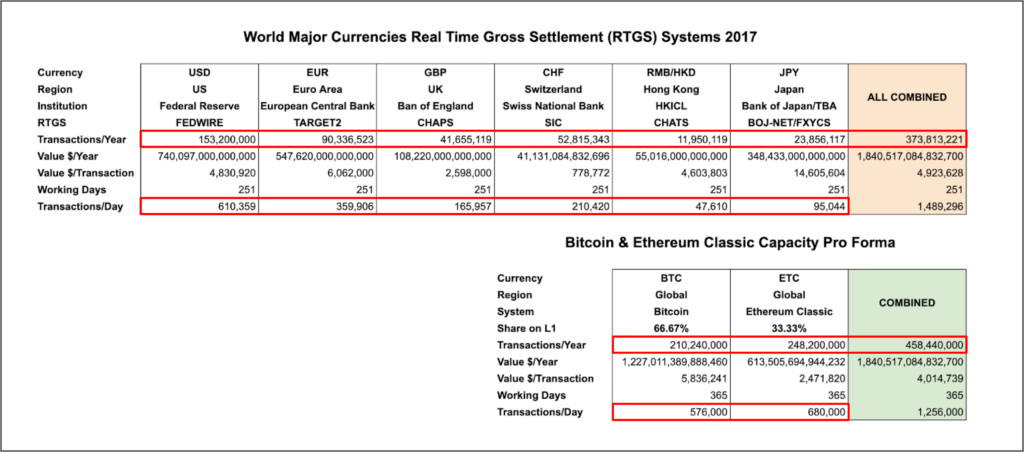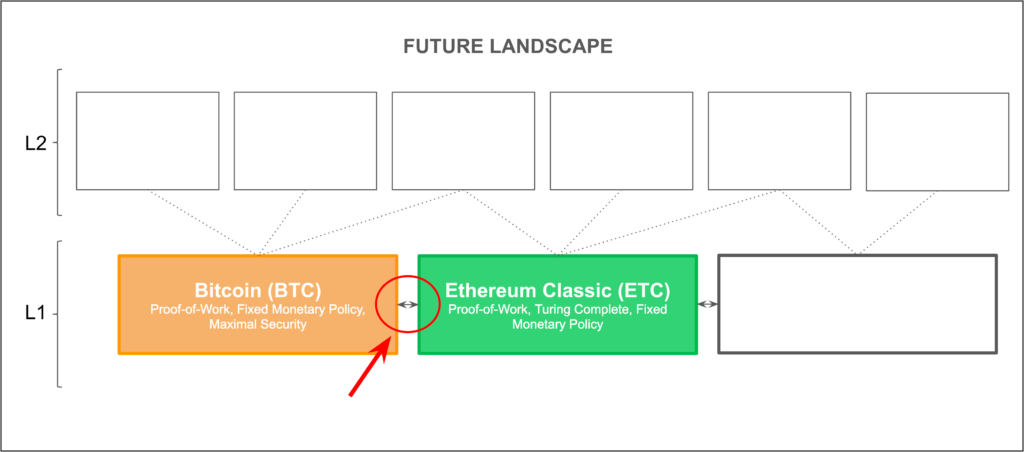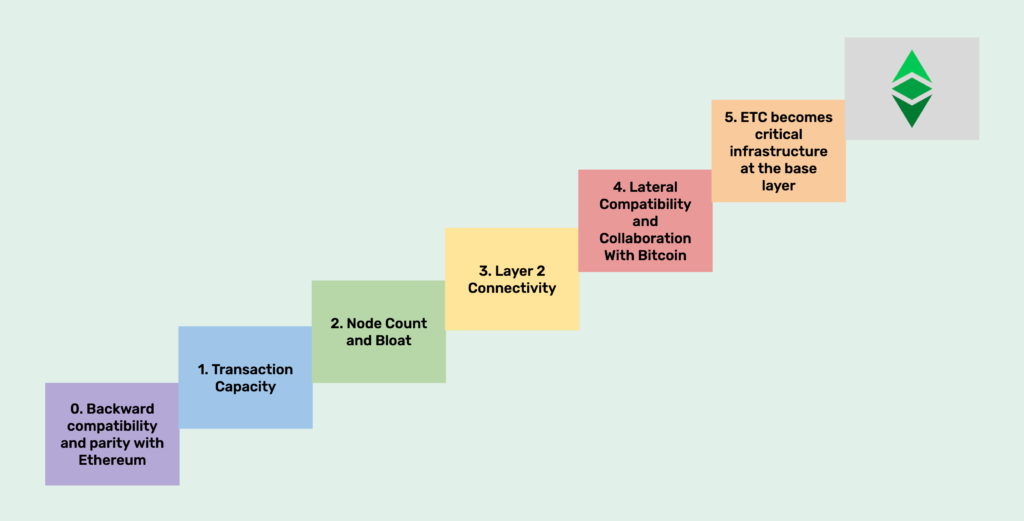You can listen to or watch this article here:
As the blockchain industry organically reorganizes itself in the future into secure and performance layers, and technologies as proof of stake and channels (layer 2 or L2) connect to base layer systems (layer 1 or L1), networks such as Bitcoin (BTC) and Ethereum Classic (ETC) will have critical roles at the base.

Ideal Roadmap
The above means ETC will connect and interoperate both vertically and horizontally in the crypto-stack.

In this context, after the Atlantis, Agharta, and Phoenix upgrades, which primarily focus on compatibility with Ethereum, the ideal long term roadmap for Ethereum Classic should focus on these broad lines:
1. Transaction capacity: Scaling responsibly thru moderate incremental efficiencies.
2. Maximizing node count by minimizing potential bloat.
3. Highly efficient L2 connectivity, interoperability, and security.
4. Increase technological compatibility and collaboration with Bitcoin.
1. Transaction Capacity
When comparing ETC and BTC at the base layer against world major currency settlements systems, BTC and ETC have individually higher transaction capacity than all systems individually, and combined have higher transaction capacity than all systems combined on a yearly basis.

However, although the above major currency volumes comprise a significant portion of all settlements globally, the above analysis is static so does not include future growth rates, and other large systems are not included, such as mainland China, Canada, India, and Brazil.
This means Ethereum Classic (and Bitcoin for that matter) should make continued, albeit safe, advances in scaling in the medium and long term.
2. Node Count and Bloat
In proof of work based blockchains, very few participants have a direct interest in containing database bloat and thus maximizing node count by making the IBD (initial blockchain download) easier for new entrants.

This has to be improved in ETC, which means further research and improvements in the protocol need to be developed to minimize the weight of the chain.
3. Layer 2 Connectivity
In order to have L2 systems easily connect with Ethereum Classic, there have to be projects in the ecosystems that focus on connectivity, such as NiPoPoWs, Flyclient, Channels, Sidechains, and other technologies that may present themselves in the future.
4. Lateral Compatibility and Collaboration With Bitcoin
Just as ETC needs to connect vertically with L2 connectivity, it also needs to connect horizontally with other base layer systems such as Bitcoin.

Bitcoin is not programmable, this makes ETC a perfect complementary system as, with interoperability technologies such as atomic swaps, ETC effectively makes Bitcoin programmable at the base layer.
That, together with the fact that both systems combined can eventually support the load of global high value settlements, is a compelling reason to collaborate and integrate technologies.

A Word of Caution
In this new phase of consolidation in the blockchain industry, even if terms like compatibility, collaboration, and interoperability are going to be used frequently, it is important that developers, miners, node operators, and other participants in their respective ecosystems do not lose focus of the principles that make their systems uniquely valuable, which is precisely what makes them complementary with others.

This means each blockchain needs to adjust to other systems to maximize functionality, but not let the roadmaps of the other systems rush or undermine their integrity.
Code Is Law